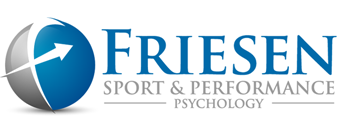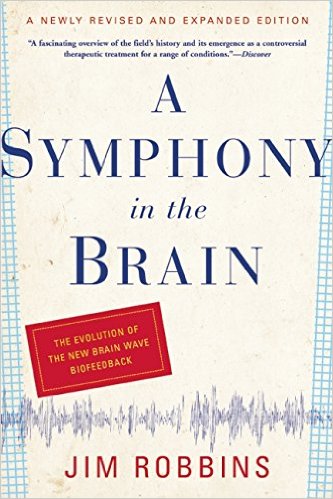
SPORT & PERFORMANCE PSYCHOLOGY
The vast majority of Olympic and professional athletes have access to a sport psychologist or mental skills coach. We specialize in working with professional and elite athletes (ages 12 and up) who are serious about taking their game to the next level. We also work with other high level performers and high achievers (e.g., actors, musicians, executives, entrepreneurs, academics, writers, etc.). We incorporate the latest science from sport and performance psychology and cognitive neuroscience (including biofeedback and neurofeedback). We provide sport and performance psychology services to athletes in Ontario’s Golden Horseshoe region (Niagara Falls, St. Catharines, Grimsby, Hamilton, Burlington, Milton, Oakville). We also provide the same services to those outside of this region via telephone/internet.
We offer athletes a highly personalized approach unique to their circumstances and goals.
Our work begins with a customized assessment to gain a clear picture of the athlete’s:
- Goals
- Knowledge and use of mental skills
- Personality, values, other factors or skills important to achievement of goals
- Psychophysiological Stress Profile
After the assessment, Dr. Friesen works one-on-one with the athlete either in person, by phone, or via video call. The focus is on helping the athlete achieve their stated goals and improve performance.
EXECUTIVE COACHING
We are often asked whether we can help non-executives reach their potential. Executive coaching is no longer a luxury reserved for executives. We work with anyone serious about success within their chosen endeavour. We work with executives and other high achievers including entrepreneurs, artists, writers, academics, students, and others trying to take their career to the next level. When working one-on-one with executives and other high achievers, we customize our executive coaching approach to meet the unique circumstances and goals of each individual or organization. We start with an in-depth assessment tailored for each client. The assessment captures key indicators to establish a clear picture of the individual’s:
- Goals & values
- Personality
- Emotional/Social Intelligence (including 360° assessments, self-reports and performance-based assessments)
- Other factors, skills, or relevant cognitive information that will contribute to the executive’s success
The process starts off with a stakeholder meeting (as needed) to gain consensus on goals and objectives for one-on-one coaching sessions. A 360° assessment may also be used to better understand the executive from others’ perspective.
Executive coaching is no longer a luxury reserved for executives. We work with anyone serious about success within their chosen endeavour. We work with other high achievers including entrepreneurs, artists, writers, academics, students, and others trying to take their career to the next level.
CAREER CONSULTING
FIND A FULFILLING CAREER PATH
We can help you find career paths that fit your unique interests, personality, passions, and strengths. We offer two levels of career consulting for those looking at a career transition. The first level is a detailed assessment and feedback session. This service takes place over a short period of time (e.g., a few days). The second level of service includes personalized career coaching over a longer period of time with weekly to monthly coaching sessions. Customized service packages are also available.
Career Assessment
The entire process can be done over the internet and phone.
All packages include a one-on-one phone session with Dr. Christopher Friesen, Ph.D., Psychologist.
Dr. Friesen will personally provide you with a follow up feedback session to discuss assessment insights and the career options most suited to your unique personality, interests, passions, and talents.
A summary report is provided for your reference.
We use only well researched measures of personality, cognitive abilities, and career interests to help you find a career path that will be most fulfilling to you.
SPORT & PERFORMANCE HYPNOSIS
Dr. Friesen primarily uses hypnosis for:
- Anxiety
- Stress
- Depression
- Low self-esteem
- Negative self-talk
- Peak performance
- Sport Psychology issues (e.g., confidence, performance anxiety, motivation, injury recovery, etc.)
- Overcoming bad habits
- Pain reduction
- Insomnia/Sleep Difficulties
- Goal achievement
- WE DO NOT WORK WITH:
- Weight loss
- Diagnosed eating disorders (e.g., Anorexia, Bulimia)
- Personality Disorders (e.g., Borderline Personality Disorder)
- Psychosis
- Current drug use (other than marijuana)
- Complex Trauma/Childhood Abuse
- Family conflict
- Marriage issues
- Grief
Dr. Friesen has completed Level 1 and Level 2 training through the American Society of Clinical Hypnosis (ASCH)
A 1-minute exclamation of what hypnosis is:
A sample of Dr. Friesen’s style of hypnosis:
Note, Dr. Friesen does not necessarily endorse Dr. Spiegel’s app as described in the videos below:
Watch Dr. Andrew Huberman interview Dr. David Spiegel on hypnosis:
The American Society of Clinical Hypnosis (ASCH) defines clinical hypnosis as a state of focused attention and reduced peripheral awareness, where individuals are more receptive to suggestions. It’s used by licensed and trained professionals to address psychological or physical problems through a highly relaxed, trance-like state.
-
Altered state of awareness:
Hypnosis induces a state different from ordinary waking consciousness, characterized by focused attention and reduced awareness of external stimuli.
-
Enhanced capacity for response to suggestion:
Individuals in hypnosis are more receptive to suggestions and can experience changes in perception, feelings, and behaviors based on these suggestions.
-
Used for treatment:
Clinical hypnosis is a tool used by trained professionals (like doctors or master’s degree holders) to address a variety of medical or psychological concerns.
-
Relaxed state:
Hypnosis is often associated with a state of deep relaxation, which is important for facilitating the therapeutic process.
The following is from the American Psychological Association Society of Psychological Hypnosis
Hypnosis involves learning how to use your mind and thoughts in order to manage emotional distress (e.g., anxiety, stress), unpleasant physical symptoms (e.g., pain), or to help you change certain habits or behaviours (e.g., smoking, overeating).
Although hypnosis sessions may differ depending on a particular client’s needs, sessions typically have two basic phases:
• The first phase is called an induction. During this phase, your therapist may help you to relax, may ask you to imagine a peaceful scene and will help you to become more focused and concentrated on what you need to accomplish during your hypnosis session.
• The second phase is called an application phase. During this phase, your therapist will make suggestions to you. For example, if you are experiencing anxiety, your therapist may suggest that during and/or following hypnosis, you will be calmer or less bothered by feelings of anxiety. If you are experiencing pain, your therapist may suggest that following hypnosis, you will no longer experience pain, or that you will be better able to manage any pain you do experience. The suggestions are the key ingredients of hypnosis because they are targeted to treat your specific symptoms or difficulties.
Many people have concerns or worries about hypnosis based on misconceptions they have. These misconceptions may be based on things they might have seen on TV, in the movies, or in stage shows.
Listed below are some common misconceptions, and the actual facts about hypnosis:
Misconception 1: The person being hypnotized will be under the control of the hypnotist, and can be made to do or say anything the hypnotist wants.
Fact 1: This is not true. No matter how deeply hypnotized you become, you will remain in control throughout the session. You cannot be made to do anything you do not want to do, or anything that you are uncomfortable doing.
Misconception 2: Hypnosis is something that is done to people, rather than something that they can do for themselves.
Fact 2: This is not true. Hypnosis is a skill you can learn. It is a tool you can use to help yourself feel better.
Misconception 3: People become trapped in hypnosis and cannot “come out” of it when they want to.
Fact 3: This is not true. People can end hypnosis whenever they want.
Misconception 4: People have to be very “hypnotizable” or “suggestible” or “gullible” for hypnosis to work.
Fact 4: This is not true. Research has indicated that the vast majority of people can benefit from hypnosis. Furthermore, being hypnotizable or choosing to be responsive to suggestions means only that you have the ability to use hypnosis effectively. It is not at all related to being gullible or weak-willed.
Misconception 5: During hypnosis, people are unconscious.
Fact 5: This is not true. During hypnosis, people are not asleep or unconscious. Although they may feel very relaxed, they are active participants in the hypnosis session.
Is hypnosis therapy?
Hypnosis is not a type of psychotherapy. Instead, it is a technique that can be used, and that can be taught to you, in the context of other therapies.
Who should perform hypnosis?
Clinical hypnosis should be conducted only by properly trained and credentialed health care professionals (e.g., licensed psychologists) who have been specifically trained in the use of hypnosis, and who are working within the limits of their professional expertise.
What kind of results can I expect from hypnosis?
Hypnosis has been demonstrated to have a wide range of benefits, from simply improving symptoms or difficulties, to completely eliminating them.
How can I expect to feel during hypnosis?
Most people describe hypnosis as a pleasant experience, during which they feel focused and absorbed in the hypnotic experience. Depending on how you and your therapist agree to structure your hypnosis sessions, they may help you to feel more alert, more relaxed, more comfortable, or more peaceful.
The number of clinical hypnosis sessions needed varies greatly depending on the individual and the specific issue being addressed. A general guideline is that most people see results within 4-6 sessions. However, some may require more or fewer sessions, and some may even see improvement after just one session. Some may require 15 sessions. Hypnosis works faster when patients/clients do the recommended home and self-help work between sessions.
NEUROFEEDBACK / BIOFEEDBACK
We specialize in neurofeedback, biofeedback, brain training, and other forms of biohacking for optimal performance. Neurofeedback (also known as Neurotherapy or EEG Biofeedback), is a type of biofeedback that uses real-time displays of brain activity, to teach self-regulation of brain function. Typically, sensors are placed on the scalp to measure activity, with measurements displayed using video displays or sound.
Biofeedback is a process that enables an individual to learn how to change physiological activity for the purposes of improving health and performance primarily through regulating the stress response. Precise instruments measure physiological activity such as brainwaves (neurofeedback), heart function (e.g., HRV), breathing, muscle activity, and skin temperature. These instruments rapidly and accurately “feed back” information to the user. The presentation of this information — often in conjunction with changes in thinking, emotions, and behaviour — supports desired physiological changes. Over time, these changes can endure without continued use of an instrument. These modalities can be used to reduce stress, tension, and anxiety and improve mental efficiency, attention, focus, and concentration (adapted from The International Society for Neurofeedback and Research www.isnr.org).
Neurofeedback, biofeedback, and/or computerized brain training are used to improve symptoms associated with stress, anxiety, depression, ADHD, epilepsy, headache, TBI/concussion, strokes, and especially to improve optimal performance.
Training begins with an assessment which produces Psychophysiological Stress Profile which helps determine which modalities (neurofeedback, HRV, breathing, muscle tension, skin temperature, and/or sweat response) would be most efficiently trained to achieve the client’s goals.
For those who are more interested in training their brains, cognitive and/or EEG-based assessments are used to develop a customized training program that targets the client’s goals.
Dr. Normal Doidge helped popularize the concept of neuroplasticity or how the brain can change with experience and various non-invasive treatments. These were popularized in his best-selling books:
The Brain That Changes Itself The Brain’s Way of Healing:
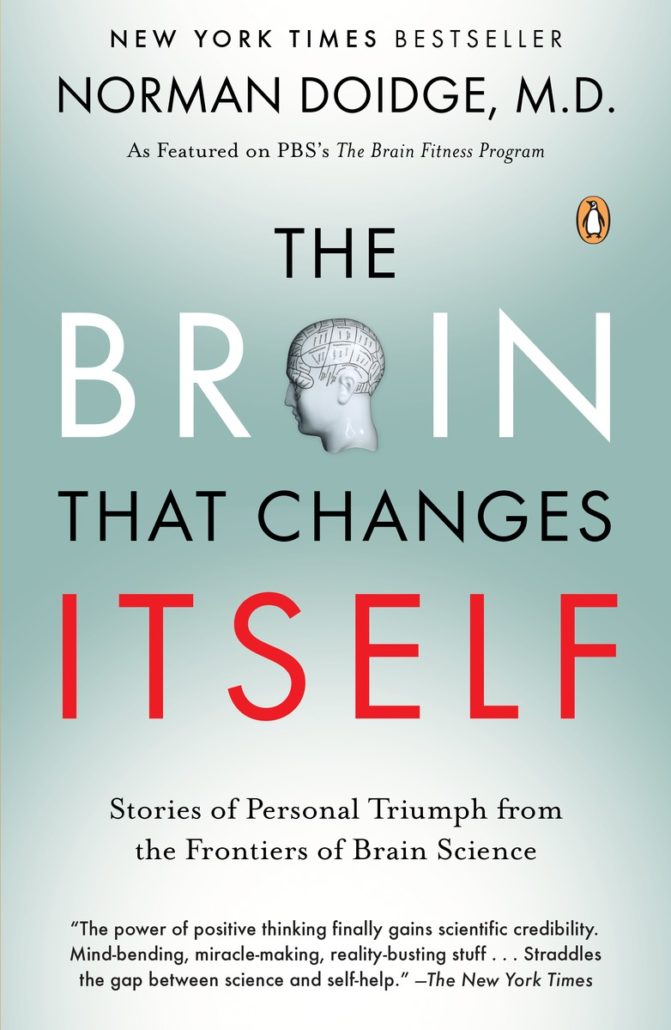
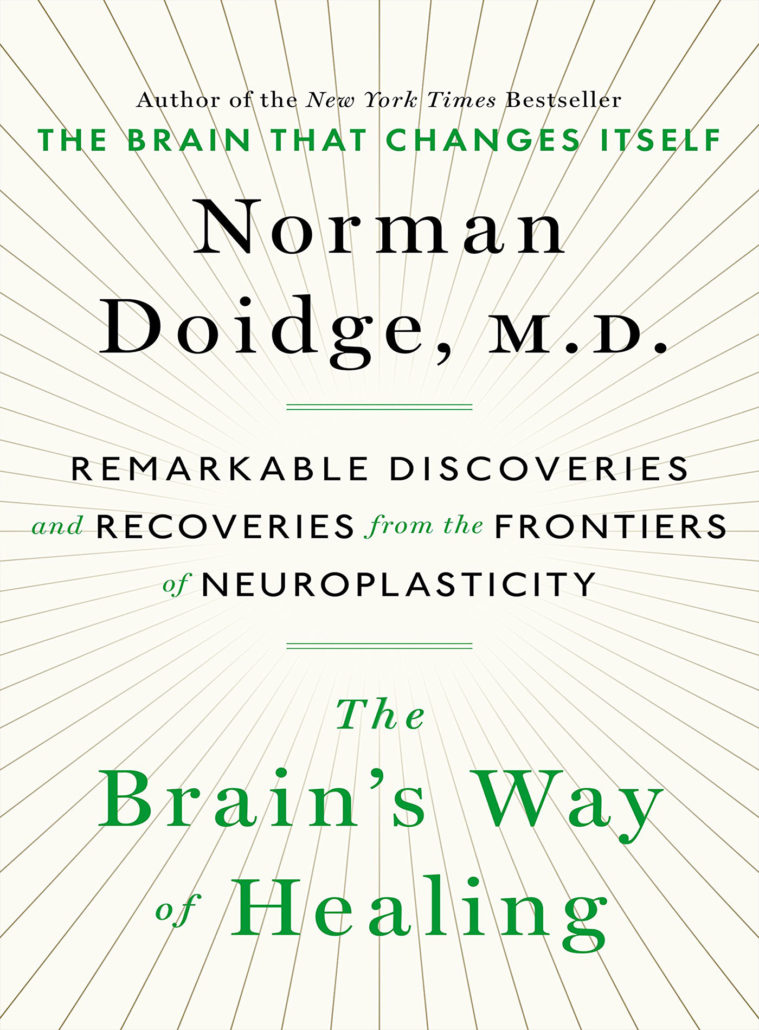
To learn more, watch the CBC’s The Nature of Things with David Suzuki documentaries below:
WHAT IS NEUROFEEDBACK?
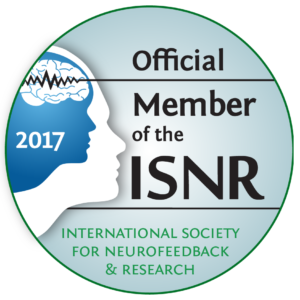 Neurofeedback (also known as Neurotherapy or EEG Biofeedback), is a type of biofeedback that uses real-time displays of brain activity, to teach self-regulation of brain function. Sensors are placed on the head to measure brain activity at particular sites, with this brain activity fed back to the client via a computer screen. The client learns to increase or decrese brain activity to improve health and performance. In other words, neurofeedback teaches you to modify your brain activity. Over time, these changes may endure without continued use of neurofeedback (adapted from The International Society for Neurofeedback and Research www.isnr.org)
Neurofeedback (also known as Neurotherapy or EEG Biofeedback), is a type of biofeedback that uses real-time displays of brain activity, to teach self-regulation of brain function. Sensors are placed on the head to measure brain activity at particular sites, with this brain activity fed back to the client via a computer screen. The client learns to increase or decrese brain activity to improve health and performance. In other words, neurofeedback teaches you to modify your brain activity. Over time, these changes may endure without continued use of neurofeedback (adapted from The International Society for Neurofeedback and Research www.isnr.org)
WHAT IS BIOFEEDBACK?
Biofeedback is a similar process that enables a client to learn how to change physiological activity for the purposes of improving health and performance. Precise instruments measure physiological activity such as heart function (e.g., Heart Rate Variability or HRV), breathing, muscle activity, skin conductance (i.e., sweating), and skin temperature. These instruments quickly “feed back” information to the client. The presentation of this information — often in conjunction with changes in thinking, emotions, and behaviour — supports desired physiological changes. Over time, these changes can endure without continued use of an instrument (adapted from The International Society for Neurofeedback and Research www.isnr.org).
WHAT CAN NEUROFEEDBACK & BIOFEEDBACK HELP WITH?
Neurofeedback and Biofeedback are used to treat ADHD, anxiety, depression, stress, epilepsy, headaches, TBI, strokes, and to help with optimal performance for those who want to perform at their best such as students, entrepreneurs, executives, and athletes.

HOW LONG DOES NEUROFEEDBACK & BIOFEEDBACK TRAINING TAKE?
Neurofeedback training typically requires 20 or more sessions, usually held twice or more weekly. Biofeedback training typically takes much less but requires home practice.
To see/hear some great podcasts where Dr. Andrew Hill discusses neurofeedback with Ben Greenfield, click below:
AND
Dr. Friesen is board certified in Neurofeedback through the Biofeedback International Certification Alliance (BCIA) and we are offering biofeedback, neurofeedback, and other neuromodulation treatments.
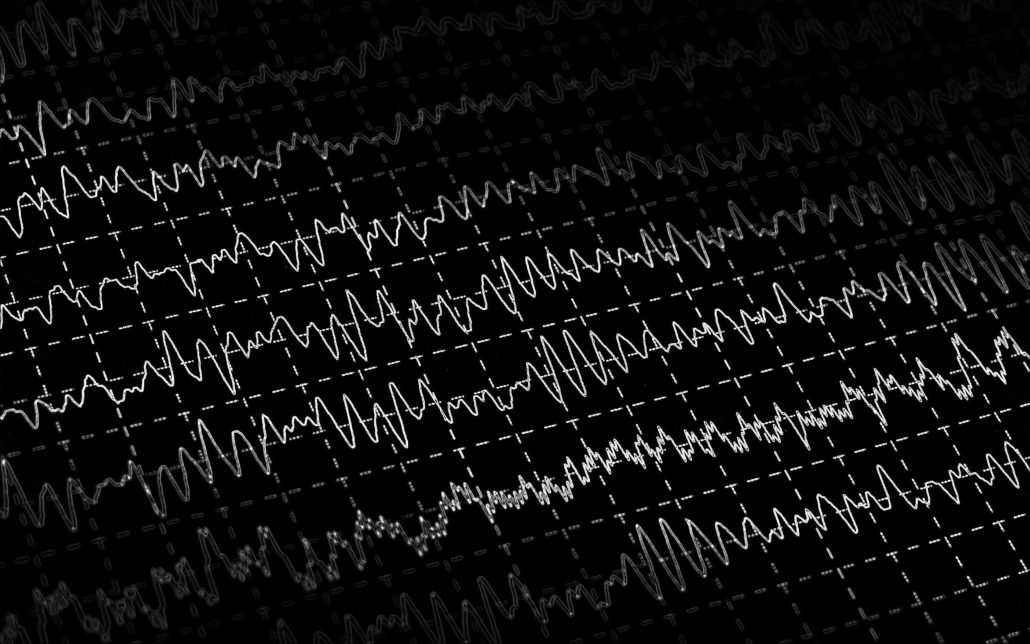 QUANTITATIVE EEG (qEEG) or “BRAIN MAPPING”
QUANTITATIVE EEG (qEEG) or “BRAIN MAPPING”
Electroencephalography (EEG) is the measurement of electrical patterns at the surface of the scalp which reflect cortical activity, and are commonly referred to as “brainwaves”. Quantitative EEG (qEEG) is the analysis of the digitized EEG, and in lay terms this sometimes is also called “Brain Mapping”. The qEEG is an extension of the analysis of the visual EEG interpretation which may assist and even augment our understanding of the EEG and brain function.
Quantitative Electroencephalography (qEEG) is a procedure that processes the recorded EEG activity from a multi-electrode recording using a computer. The digital data is statistically analyzed, comparing values with “normative” database reference values. The processed EEG is commonly converted into color maps of brain functioning called “Brain Maps”.
The EEG and the derived qEEG information can be interpreted and used by experts as a clinical tool to evaluate brain function and to track the changes in brain function due to various interventions such as neurofeedback or medication.
The use of advanced techniques such as Independent Component Analysis (ICA) and neuro-imaging techniques such as Low Resolution Electromagnetic Tomography (LORETA) can map the actual sources of the cortical rhythms. These advanced approaches are changing our understanding of the dynamics and function of the human brain.
Why do a qEEG for Neurofeedback?
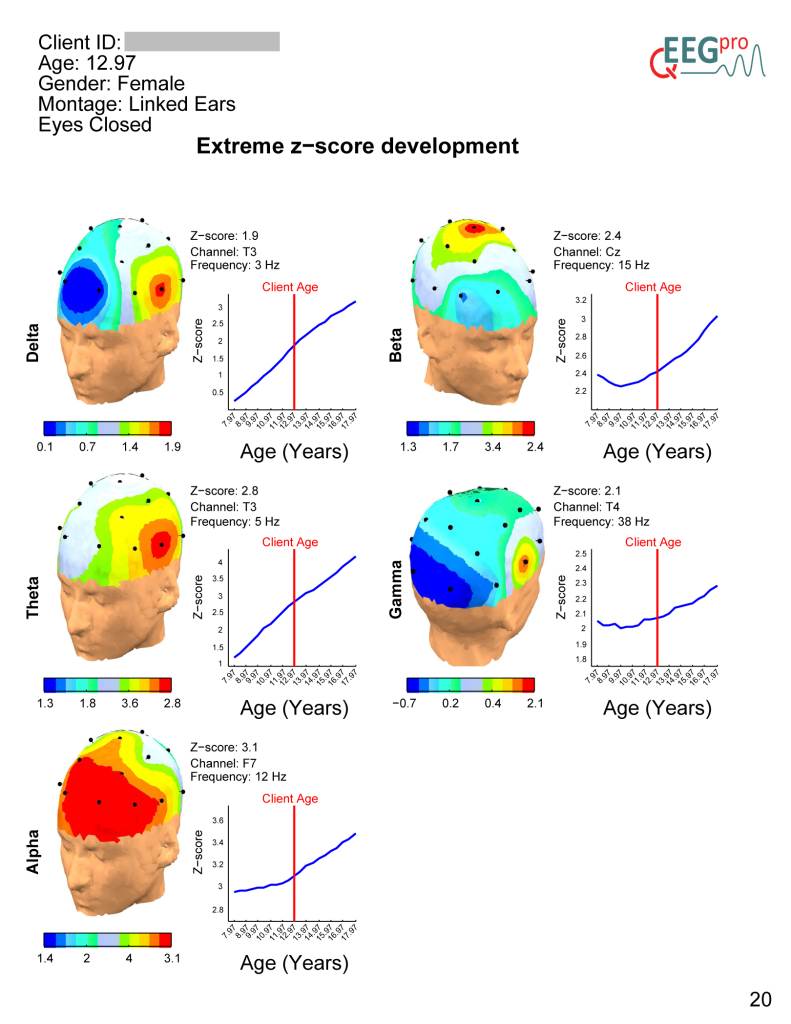 There are many in the field of neurofeedback who do not perform qEEGs prior to designing a clinical intervention. These people are currently practicing well within the standard of practice for this rapidly evolving field.
There are many in the field of neurofeedback who do not perform qEEGs prior to designing a clinical intervention. These people are currently practicing well within the standard of practice for this rapidly evolving field.
There is an increasing body of evidence that there is a positive treatment impact from the use of a qEEG and the resultant customized neurofeedback intervention.
Clinical applications of qEEG
The qEEG is used by those currently in a professional practice for the following clinical applications: evaluating effects of medications and predicting medication response, evaluating head traumas, assessment of cognitive and psychiatric changes, in neurofeedback, and in peak performance assessment and training as well as others.
Adapted from qeegsupport.com
OTHER NEUROMODULATION TREATMENTS
A number of other neuromodulation techniques offered at Niagara Neuropsychology include Cranial Electrotherapy Stimulation (CES), Transcranial Direct Current Stimulation (tDCS), and Transcranial Photobiomodulation.
To hear one of the top neuromodulation (aka Electroceuticals) researchers (Vincent Clark, Ph.D.) discuss the research and potential of such modalities, click here:

Alpha-Stim AID
Briefly, Cranial Electrotherapy Stimulation (CES) utilizes extremely small levels of electrical stimulation across the head. It has been found to be efficacious for a number of difficulties including anxiety, depression, insomnia, and chronic pain. CES units are approved in the United States by the Federal Drug Administration (FDA) for the treatment of anxiety, depression, and insomnia. Click here and here to learn more. Click here for a list of references.
Evidence from published research suggests CES use activates particular groups of nerve cells that produce the neurotransmitters serotonin and acetylcholine which can affect the chemical activity of nerve cells that are both nearby and distant in the nervous system. By changing the electrical and chemical activity of certain nerve cells, CES devices like Alpha-Stim® (seen on the left) appear to amplify activity in some neurological systems and deactivate activity in others. This neurological ‘fine tuning’ occurs either as a result of, or together with the production of a certain type of electrical activity pattern in the brain known as an alpha state. CES has been found increase alpha and decrease delta, theta, and beta waves on qEEG brain maps. This typically results in feeling calm, relaxed and focused. This appears to decrease stress effects, reduce agitation, stabilize mood, and regulate both sensations and perceptions of particular types of pain.
Adapted from Alpha-Stim.com
According to the Johns Hopkins School of Medicine, “tDCS is a non-invasive, painless brain stimulation treatment that uses direct electrical currents to stimulate specific parts of the brain. A constant, low intensity current is passed through two electrodes placed over the head which modulates neuronal activity. There are two types of stimulation with tDCS: anodal and cathodal stimulation. Anodal stimulation acts to excite neuronal activity while cathodal stimulation inhibits or reduces neuronal activity.
Although tDCS is still an experimental form of brain stimulation, it potentially has several advantages over other brain stimulation techniques. It is cheap, non-invasive, painless and safe. It is also easy to administer and the equipment is easily portable. The most common side effect of tDCS is a slight itching or tingling on the scalp.
Several studies suggest it may be a valuable tool for the treatment of neuropsychiatric conditions such as depression, anxiety, Parkinson’s disease, and chronic pain. Research has also demonstrated cognitive improvement in some patients undergoing tDCS. Currently, tDCS is not an FDA-approved treatment.”
tDCS involves the application of a constant, low current to the brain area of interest via electrodes on the head. It is believed to increase or decrease neural excitability (depending on the electrode configuration). tDCS is currently an experimental treatment for various conditions such as depression, anxiety, and brain injuries including strokes. Research to date suggests there are no serious side-effects or reported adverse events (click here for a recent review of adverse events). There is evidence that tDCS can improve psychological problems such as depression and possibly anxiety (click here, here and here). In addition, there is evidence that tDCS can improve cognitive performance in otherwise healthy subjects (click here and here) and possibly enhance cognitive functions in those with brain damage (click here). For a 2014 review of the research click here. For a 2016 review of the research, click here.

VieLight Neuro
Transcranial Photobiomodulation (aka Neurophotomodulation) or low-level light therapy (LLLT) involves the use of low-level near infrared light to stimulate neuronal mitochondria and cellular events. These lights are applied to the patient’s head for therapeutic purposes such as recovery from neurological disorder or damage. Light in the red and near-infrared regions of the electromagnetic spectrum are used because of their ability to penetrate the scalp, skull and brain. Studies have been performed to assess the safety and effectiveness of transcranial light therapy in conditions such as stroke, traumatic brain injury (TBI), and neurodegenerative conditions.

VieLight Neuro
For a review of the research, click here (general review), here (Alzheimer’s and Parkinson’s disease), here (TBI), here (mild TBI/concussions) here (improved cognitive and mood in healthy subjects), and here (references).
The first study to report significant cognitive improvement in dementia participants following brain photobiomodulation treatments was presented at the Alzheimer’s Association International Conference in Toronto in July 2016. To see the abstract, click here. To see the poster, click here. To see a related news clip click here.
Due to the fact that only recently have researchers started to use transcranial photobiomodulation in the treatment of brain disorders and, although transcranial photobiomodulation is considered safe, at this point in time it is considered experimental and thus no medical claims can be made.
